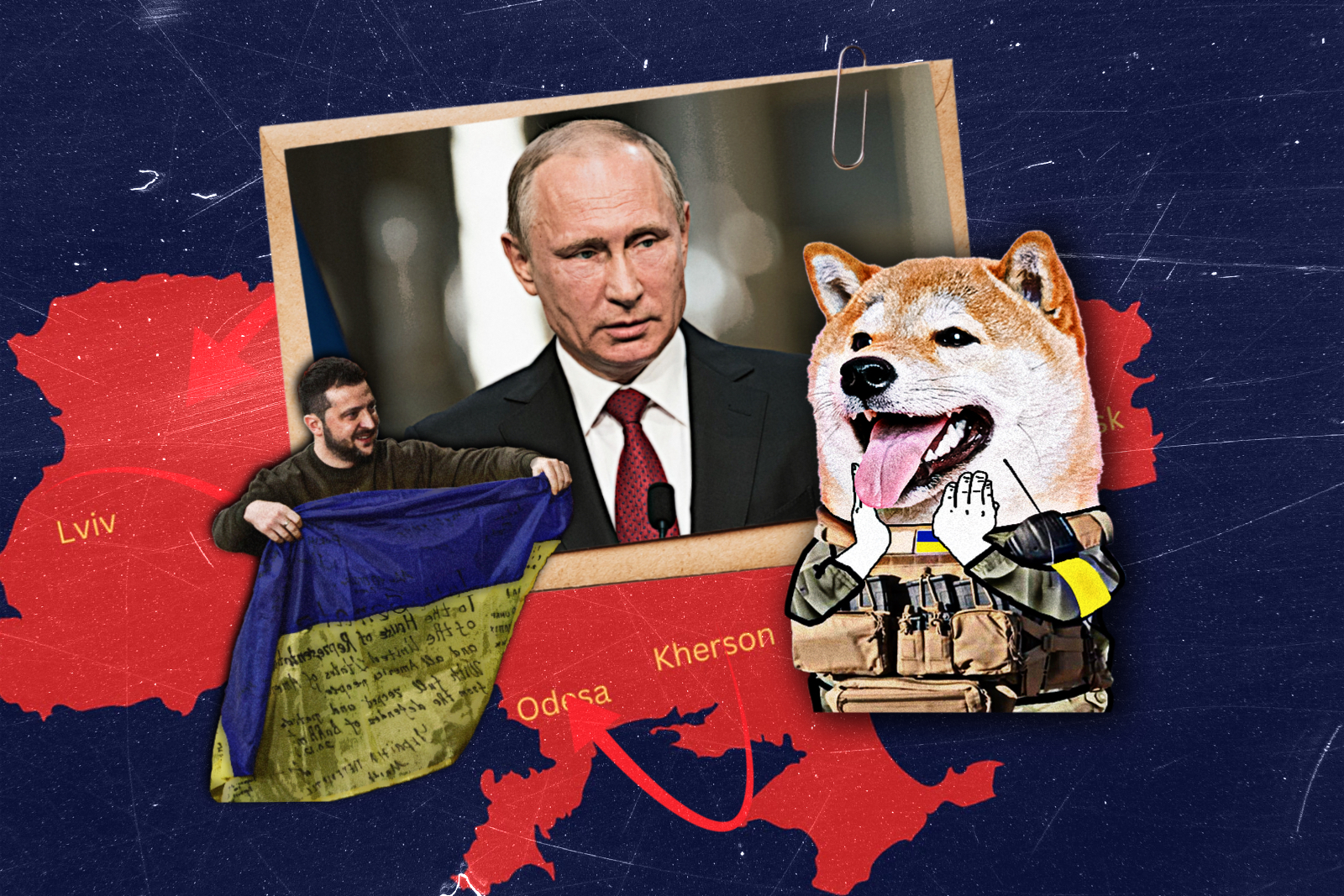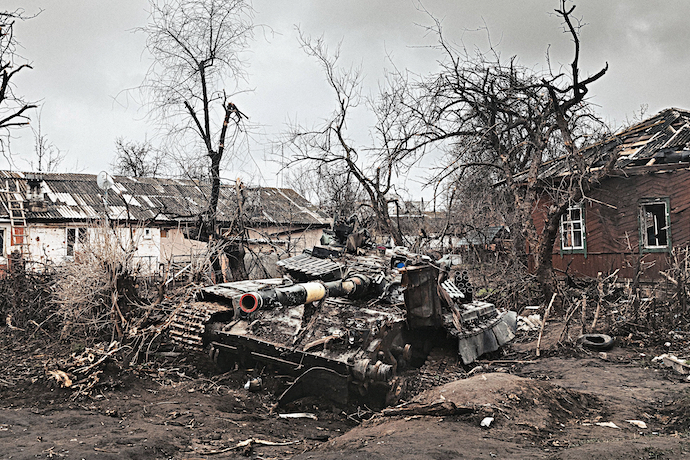
Meme Warfare: What Western Governments Can Learn from the NAFO Alliance
Russian state-sponsored influence operations have become part and parcel of the geopolitical landscape over the last decade and a half. From the Bronze Soldier crisis of 2007, an early case of information warfare levied against Estonia, to successful efforts to influence the 2016 U.S. presidential election, Russian state actors have become adept at using social media to sow discord and political division in the West.
Western governments, including the U.S., have had a difficult time entering the information space with the intent of countering Russian influence operations. In this respect, Russia has maintained an advantage over the West—it has been able to directly tap copious government resources to influence and frame online discussions in a manner favorable to its geopolitical interests.
Yet following the hero’s welcome of President Volodymyr Zelensky in Washington on December 21, something about this Russian invasion continues to feel different than those before it—a palpable feeling that goes beyond the West’s resolutely united response over the last 10 months in support of Ukraine. The disinformation narratives Russia has pushed as justification for its wars of aggression—Crimea in 2014, Syria in 2011, and Georgia in 2008—which fell on receptive ears for years in the West, have instead fallen flat on their face. In comparison to past Russian invasions, a few things are different this time.
“How to become a fella?”https://t.co/t2yCmczRwV
We’ve compiled all NAFO related links in one place for your convenience.
— North Atlantic Fella Organization (@Official_NAFO) October 8, 2022
In the run-up to February 24, the U.S. declassified unprecedented amounts of intelligence in an attempt to ‘pre-bunk’ Russia’s justifications for its invasion. Speaking before Congress on December 21, Zelensky praised the “investment” the West has made in backstopping global security and democracy through its military assistance to Ukraine. While Zelensky referred to the Patriot batteries, HIMARS, and Javelins the West has provided his country, the adoption of such a novel media strategy—releasing intelligence en-masse—should be thought of as part of this investment. Western governments had simply never done such a thing before.
Yet the swift action Western countries have taken to support a key democratic ally in need—both militarily and in the information space—exemplifies just how grave the threat to global order Russia’s full-scale invasion of Ukraine is.
Beyond the Biden administration’s pre-bunking, however, a wave of pro-Ukrainian digital activism has emerged in the months following February 24, garnering support among the public and elected officials worldwide. It has taken the Russian disinformation machine head-on using another novel tool—memes.
The NAFO movement, a play on NATO standing for North Atlantic Fella Organization, supports Ukraine online using a virtual army of Shiba Inu memes. The group raises funds for the Ukrainian military, counters and mocks disinformation disseminated by Russian officials, and even forced a Russian diplomat to temporarily deactivate his Twitter account after a feisty exchange about the Donbas. A simple search of Twitter at the time of this writing, reveals dozens of NAFO-affiliated users providing up-to-the-minute updates about Russian war crimes across Ukraine, Ukrainian advances in Bakhmut, and naturally, plenty of memes clapping back at the Russian Foreign Ministry and Vladimir Putin’s sycophants.
NAFO sprung up in May when several Twitter users began superimposing the Shiba Inu over images from Ukraine and sending them to supporters for display on their social media accounts. NAFO has become a rallying cry for supporters of Ukraine across the world, and even social media-savvy elected officials, including the Ukrainian Defense Minister, Estonian Prime Minister, and U.S. Congressman Adam Kinzinger.
NAFO joins the likes of The Ghost of Kyiv, Saint Javelin, and Ukraine Memes for NATO Teens as one of several meme-centered, non-government-affiliated social media campaigns supporting Ukraine. While these other meme movements began in earlier stages of the February 24 invasion, NAFO has emerged as the glue binding together what experts dub to be the first offensive information operation carried out by the collective West in response to Russian disinformation.

Several structural factors in the information environment have aided NAFO’s success.
Social media platforms and instant messengers play a much larger role in everyday life in 2022 than they did in 2014. This, according to the Wilson Center, “has given the average Internet user unprecedented access to raw footage of troop movement, equipment transport, and the damage caused by Russian bombardment of Ukrainian cities.” Unlike those of years past, this invasion has been on full display around-the-clock for the world to see, and Ukrainian activists have been able to use the ubiquity of social media platforms to their advantage in shedding light on Russian atrocities.
This steady flow of information directly from the frontlines has enabled social media movements like NAFO to not only pre-bunk Russian disinformation in a manner similar to that which the U.S. government did, but to do so in a matter of seconds with maps, videos, and memes—all catchier than the paragraphs and articles pundits and news publications tend to release when fact-checking false claims. Research shows humor to be one of the most effective antidotes against disinformation, and instead of getting bogged down in dry rhetoric, NAFO uses its memes to set the record straight—and dismantle Russian influence operations one by one.
What makes NAFO’s rise remarkable is its grassroots nature, which has been accompanied by uncoordinated, but vital, support from the tech-savvy elected officials in amplifying its message. Strikingly, NAFO’s strategy inversely mirrors the Biden administration’s in the early stages of the February 24 invasion. In March, the White House invited several social media influencers to take part in, and post about, a briefing on current events in Ukraine, with the goal of reaching people who may not be politically engaged, but are active on social media. Today, the elected officials proclaiming themselves to be “Fellas” have indeed brought NAFO into the political mainstream, interacting with their own colleagues who may not be active on social media but are, naturally, engaged in politics.
The emergence of NAFO as a grassroots pro-Ukrainian online movement has leveled the playing field that for so long had been one-sided in Russia’s favor. This, in combination with unprecedented intelligence releases and historic military assistance to Ukraine from Western allies, represents a fundamental, cross-domain change in the West’s Russia playbook.
While it remains to be seen how Russia’s full-scale invasion will end, Western governments should be taking notes on NAFO’s success at winning the information battle in Ukraine. This does not mean agencies like the CIA should post memes. Rather—they must craft media strategies that build on pre-bunking while binding the pathos of short, quippy social media posts with the ethos they maintain as the leaders of the free world, to not only continue sharing the truth of Russia’s atrocities in Ukraine but to also be better prepared to dismantle future online influence operations.

